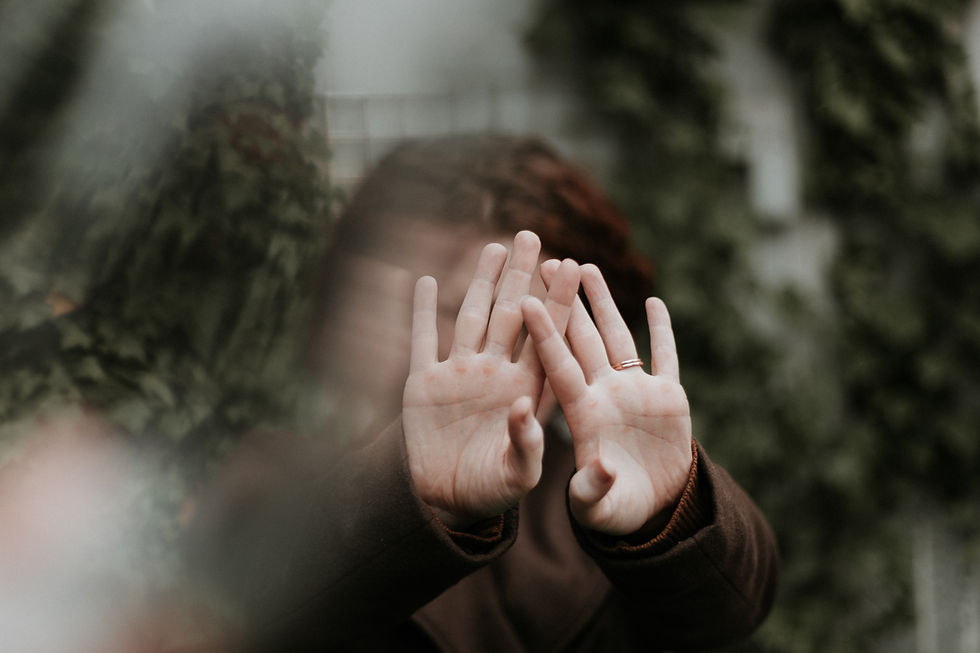The vicious power of Stigma
- cyclingforsociety
- 4. Apr. 2022
- 4 Min. Lesezeit
Aktualisiert: 14. Dez. 2022
Everyone knows the word Stigma. But what does it actually mean? Why is it a problem and what has Stigma to do with mental illness? The following article is aiming to explain how Stigma emerges and how it is effecting the lifes of those being stigmatized.
When we decided to dedicate our life efforts to reduce Stigma against people with mental illnesses, we had all those stories in mind, affected people shared with us. Their pain, hopelessness, and anger, which were caused by unequal treatment, mocking, hasty judgement, and endless other excluding behaviour, were reason enough for us to start our Anti-Stigma-Project.
For many persons with mental illness, the stigma of their illness is worse than the disease itself (Arboleda-Flórez/ Sartorius: P. 16). Belonging to one of the most stigmatized group, people with mental health problems are facing stigma-based behaviour in most human interaction.
But how come Stigma is so powerful? What exactly does Stigma mean and what are its effects on those being stigmatized?

Even thought the Stigma of mental disorders is pretty consistent, the definition of Stigma is not. There is countless explanations about what Stigma means. We tried to narrow it down a bit to make it easy to understand:
A stigma is a socially constructed “mark of disgrace” (Oxford) which defines people by attributing them undesirable and distinguishing characteristics. Stigmatization is based on social comparison and generalization with the result of marking a whole group of people as different by using those negative attributes (prejudices). The assumingly obvious deviation (“otherness”) of “branded” people leads to a strong feeling of disapproval (Cambridge) which the majority of people of a society share.
This feeling of disapproval provokes an active devaluation of this group of people.
Reading this it becomes obvious that the impact of Stigma derives from the following factors:
Stigma results in automated pictures (prejudice) which come into the mind of people when they think/ talk about a certain group of people
Those prejudices-based pictures trigger negative emotions against individuals who carry attributes of the devaluated group
Those negative emotions result in the common wish to not interact with those deviant people. They also, more often than not (unintentionally), result in the understanding that “non-deviant” people are being superior to those marked as “different”.
The feeling of superiority lead to excluding behaviour such as discrimination.
Stigma hence can be explained as the reason for excluding behaviours such as discrimination. Sigma is the attitude – discrimination the actions which result from it.
What makes Stigma so powerful is the fact that we all “inherit” different Stigmata during our socialisation which makes the automatism explained above so fast and efficient. And this also makes it so hard to get rid of Stigma. It has always been there – generations before we even have been born. It’s based on shared values of society and hence based on the values our grandparent, parents, and us. Values are what holds society together, what protects humanity and what gives humans control and self-confidence in their actions. That’s undebatable true! But what’s also true is that some people of society deliberately create injustice for their own power and well-being – and this requires exclusion and leaving some people behind. “Phenomena” like poverty, racism and war are some of the examples to be mentioned here alongside with Stigma.
What also makes Stigma very powerful is the effect that it has on those being stigmatized. Not only that they experience being rejected because of having health problems they (mostly) have net even caused themselves, not only because they are attributed with characteristics they might not even show and not only that they learn from they daily interaction how society thinks people like “them” look like or act. But also, because as members of society themselves, they most likely went through the same process of socialisation as everyone else, hence they share the same values and hence, they share the same Stigmata about the group of people they apparently belong to.

Taking over commonly shared prejudice about oneself is called self-stigmatization. Self-stigmatization leads to shame and guilt, embarrassment, self-isolation, resignation, and fear of social interaction with non-affected people. Because of this affected people will less likely will talk to friends/ co-workers or even doctors about their problems and not seek for professional help, even if they urgently need it. Being stigmatized by others and stigmatizing oneself is not only preventing affected people from getting better, but it also actually worsens the symptoms of an active or even underlying mental illness.
Stigmatizing people deliberately or unintentionally is a powerful tool to exclude people from participating in society equally. This applies for all marginalized groups, not only our target group. Marginalized group differ from country to country as well as the Stigmata which are put upon them. What is the same in every country: every human being stigmatizes! And in most cases, they are not even aware of that.
Therefore, we want to create awareness – not play the blame-game! The most powerful tool to fight Stigma is making people aware, that we are all holding Stigma as result of our socialization. By seeing them, understanding them, and actively reflecting their origin and the automated emotions which come along with them, we all can contribute to fight Stigma and making this world fairer and more inclusive.
Resources:
(1) Arboleda-Flórez, Julio; Sartorius, Norman (2008): Understanding the Stigma of mental illness.







Kommentare